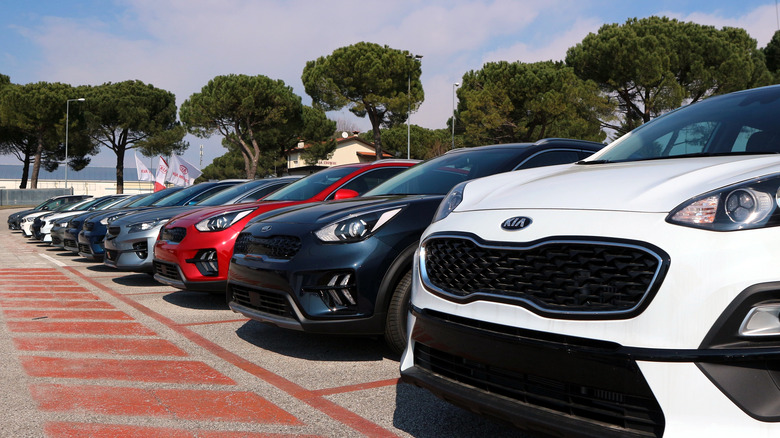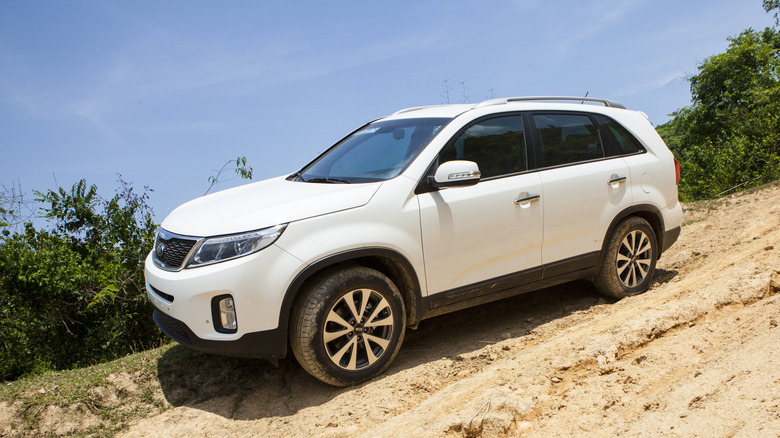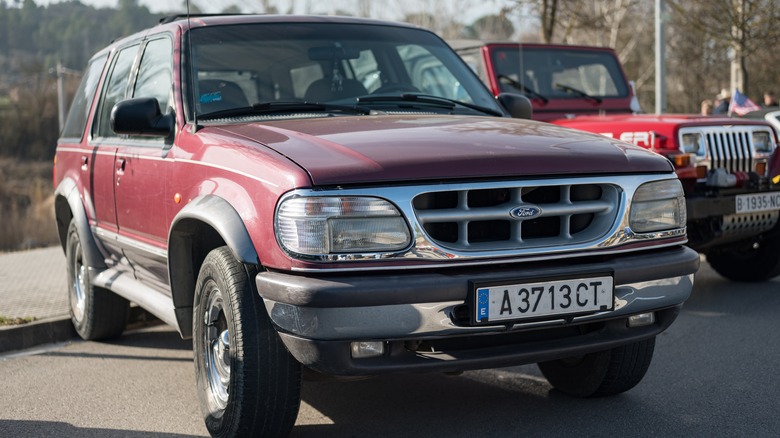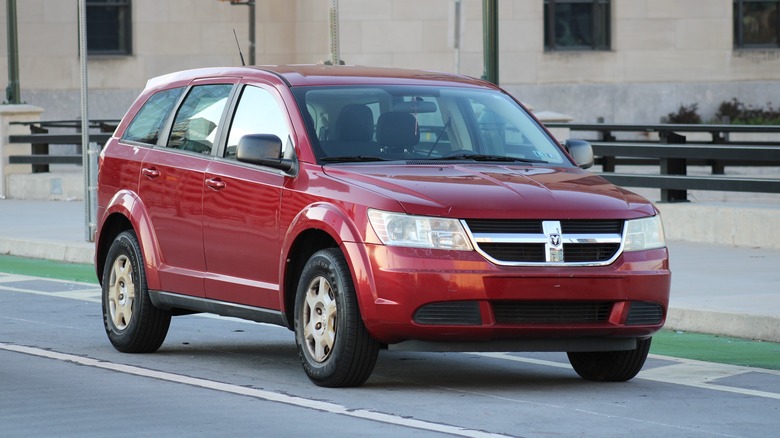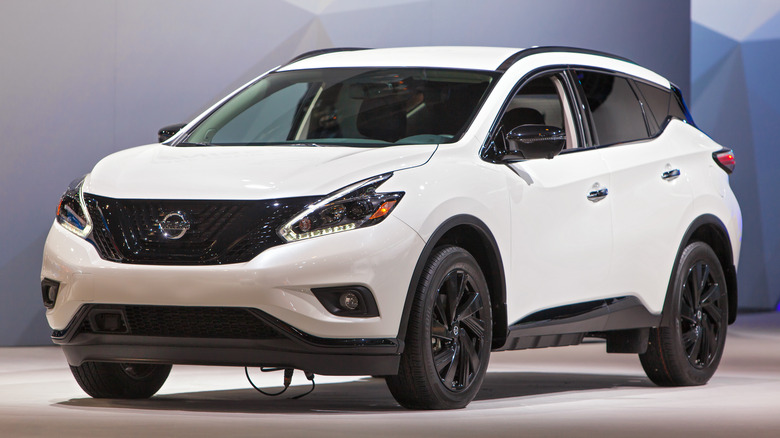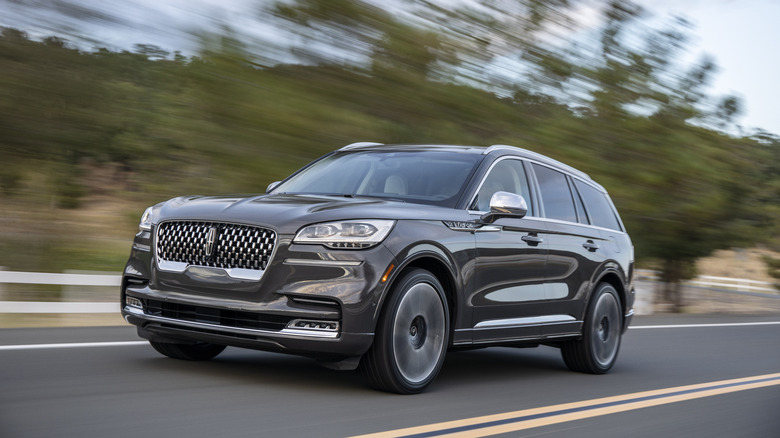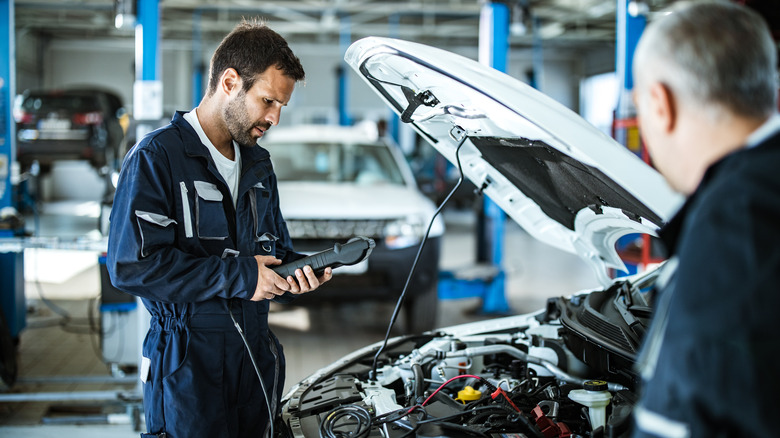5 Mid-Size SUVs To Avoid When Looking For A Used Car In 2024
We live in the golden age of mid-size SUVs, with brilliant models like the 2024 Toyota Grand Highlander proving that power and efficiency aren't mutually exclusive. However, new mid-size SUVs have steep sticker prices, so the used car market is worth a browse. After all, cars depreciate in value by an average of about 10% the moment they're driven off the lot. Needless to say, you can save a lot by opting for a used car and still score one that's nearly as good as new.
But when shopping around, be wary. Some models have earned a nasty reputation thanks to serious recalls, failing parts, low efficiency ratings, nightmarish owner experiences, and other big red flags. Such SUVs should be avoided altogether.
So if you're ready to buy an SUV, we have plenty of recommendations. In this article, however, we're taking a look at the top options to avoid. That isn't to say that every model year of these mid-size SUVs are bad. Rather, there are certain years that most professionals and owners agree are a risky gamble when buying used.
The Kia Sorento
Popularity-wise, the Kia Sorento is far from a failure. In fact, in our initial test drive of the 2014 Sorento, we gave it a positive review for its high-luxury feel. But after a decade, those earlier Sorento models have revealed enough reliability problems, recalls, and owner complaints to place this Kia brand firmly on the "don't-even-bother" list.
Such low grades are largely thanks to the daunting history of recalls plaguing the Sorento line. Indeed, since 2006, not a single model is free of at least one recall. The record holders are the 2022, 2016, and 2011, with 8 recalls each. It's the main reason the 2011 Sorento placed third on our list of the Top used Kia Models to steer clear of.
These recalls, whose causes range from engines catching fire to fuel system leaks, may be covered by the manufacturer's warranty. However, most states don't require dealers to repair used cars or inform buyers of the recall history. Thus, a used Sorento could be hiding some expensive repair needs. RepairPal.com estimates the average annual repair cost of the Sorento at $533.
Just like the Sorento's recalls, most owner-reported complaints aren't year-specific, either. For example, many 2014 Sorento owners report faulty ignition coils causing engine misfires. But that issue isn't unique to the 2014 Sorento. The same complaint can be found for every Sorento from 2003—2007, 2011, 2012, 2014, 2015, and 2016. That's almost half of every model released in the last 20 years. Yikes.
The Ford Explorer
Not every Explorer model is a dud, but the ones that are should be avoided. Comparing the different model years using data from the National Highway Traffic Safety Administration and Consumer Reports, third-generation Explorers emerge as the worst for buying used. These model years, between 2002 and 2005, have some of the most abundant and alarming problems.
In fact, these early-2000s models have potentially deadly defects. In 2001, reports of failing Explorer Firestone tires began "popping" up across the U.S. Ford eventually recalled the affected models after over 700 people were injured and 174 killed. It's the primary reason the Explorer landed a spot on the list of Ford's biggest flops of all time, as well as the deadliest defects in automotive history.
Tire-blowouts aren't the only issue with third-gen models. The 2002 Explorer is the perfect example, with over 3,600 recorded complaints and 14 recalls on the NHTSA database —many of which are safety-related. Owners have reported issues with the airbags, engine, cooling system, hydraulics, suspension, and other critical components, while recalls include defects that could cause engine fires and crashes.
After the 2002 model, things didn't get reassuring for the Explorer. The 2003 model had 7 recalls (one of which could cause a dashboard fire), and common complaints surround the structure, power train, engine cooling, electrical system, suspension, and airbags. For the 2004 and 2005 models, those same complaints can be found in abundance on the NHTSA's consumer reports database.
After the 2005 model, Ford released the fourth-generation Explorer, and its updated frame seems to have rectified some of its predecessor's safety problems. Issues persisted, such as the 2016 model's propensity for transmission troubles and other issues. Nonetheless, the pattern suggests that newer models are improvements over the 2002 to 2005 run.
The Dodge Journey
The first on our list of the 10 used Dodge models to steer clear of is the 2009 Dodge Journey, and for good reason. This particular model year was the debut of the Journey line, and it set a low bar. Plagued with recalls and user complaints, the biggest problems surrounded the Journey's electrical system. Faulty electrical components led to fires from short-circuits, failing ignition switches, and even headlights turning on by themselves to spooky effect. That's not a great first impression, but things didn't get much better for the Journey as the years went on.
For the 2010 Journey, new problems arose. Airbags weren't deploying, fuses weren't blowing, and wiring harnesses were easily compromised. Recalls were quick to unroll, but, unfortunately, new models continued to hit the market with their own unique issues. The final Journey, the 2020 model, offers plenty of comfort, but it lags while accelerating and delivers a poor ride with noticeable leaning on turns. It also has a non-linear brake response. That's normal for an 18-wheeler big rig and awful for an SUV.
U.S. News gave the 2020 Journey an aggregate score of 6.4/10 and ranked it last in its 2020 list of affordable midsize SUVs. Keeping with the trend of previous models, it gets 21 mpg. The above problems are a turn-off for a gas-hungry seven-seater, especially since SUVs are expected to be both powerful and maneuverable.
People want midsize SUVs for family road trips and runs to the hardware store, not slow accelerations and early-morning ignition troubles. Dodge seems to have read the writing on the wall and retired the model after 2020. The Journey's 11-year run isn't something to emulate, so we recommend avoiding used Journeys altogether.
The Nissan Murano
The 2003 Nissan Murano was ahead of its time — perhaps a little too much. It introduced the Xtronic Continuously Variable Transmission (CVT) to Nissan's catalog, a fuel-efficient system that has drawn both controversy and fandom. But although CVT systems have improved over time, the Murano's early attempt was fraught with problems. Stalls, unresponsive gas pedals, and random power losses quickly gave the Murano's fancy new transmission a bad rap.
The complaints are warranted. While the 2023 model achieves a respectable 23 mpg, its transmission still receives criticism. According to CarAndDriver, "the CVT spikes the engine revs and holds them there, resulting in a loud, droning growl." Basically, it's annoying. And in the 20 years of development since the Murano's 2003 debut, you'd expect better.
That 2003 debut is probably the brand's worst, landing on our list of the 10 used Nissan models to avoid. Its swan song, the 2023 Murano, also has its fair share of complaints, as alluded to above. However, it seems Nissan is receptive to criticism. With each model year, some problems get corrected while new ones emerge.
The 2004 Murano fixed some of the issues of its predecessor and birthed new ones. Consumer Reports says it boasts a "powerful engine performance, nimble handling, [and] strong brakes." Unfortunately, it still has a higher-than-average number of complaints on NHTSA's database.
Consistency lacking, the Murano has a problematic history, so we recommend avoiding it when buying used. The worst years for the Murano are 2003–2007, when it seems Nissan was still working out the kinks of the new transmission design. Recent model years also have recalls and complaints, but they're not all deal-breakers. CVT vehicles have greater fuel efficiency compared to other transmission types, so it's worth comparing the different model years before you buy.
The Lincoln Aviator
The Lincoln Aviator checks all the boxes for a top-tier midsize SUV — almost. It's roomy, powerful, fast, and bejeweled with fancy electronics. The high-tech features of the 2025 Aviator are nothing short of cutting-edge, with a 360-degree camera, parking assist, and even automatic braking while reversing to avoid accidental fender-benders. However, the success of the 2025 model doesn't exactly represent the earlier model years that populate the used car market.
Since its 2003 debut, the Aviator has been plagued with reliability problems, which persisted as recently as 2023. In fact, the 2023 Aviator is often ranked as one of the year's worst SUVs, with a reliability rating of one out of five. The most common complaints include the electronics, drive-train, and peeling paint. But if you don't give much creed to consumer complaints, consider the recalls. It's had five recalls thus far, and that's only after two years on the road — no wonder RepairPal estimates the annual repair cost of an Aviator at a whopping $626.
Stepping back two years, the 2021 Lincoln Aviator has a laundry list of red flags as well. Problems with the seatbelts, power train, steering, suspension, electronics, and more have given the 2021 model the distinction of "worst year to buy used" on TopSpeed.com's analysis. Still, each year has its fair share of issues.
These examples display a pattern of problems with the Lincoln Aviator. That being said, its hybrid models, released alongside their gasoline equivalents starting in 2020, are impressively fuel-efficient. It's an important consideration when shopping around the used car market, with gas models offering 23 mpg and hybrid models offering 56 miles to the gallon. Thus, the Aviator line has some positives, so this is another midsize worth looking into with extreme shrewdness.
Our methodology for this list
To determine the value of a used car model, we looked at both professional analyses and owner complaints. Our main source was the U.S. government's National Highway Traffic Safety Administration (NHTSA), which compiles robust data on just about every vehicle model released in recent decades. This data is especially useful for finding midsize SUVs to avoid when buying used, since it includes both owner-submitted complaints and unbiased descriptions of recalls and investigations.
ConsumerReports.org was our next main source for research. While not a government organization, its data is based on the investigations and testing of "over 140 dedicated scientists, researchers, and technicians." Hence, it's a trusted source for vehicle reliability, and its data is supported by consumer reports from millions of surveys and owner-submitted reviews. Most importantly, Consumer Reports aggregates its diverse data to provide reliability ratings on a scale of one to five.
Once we review the professional databases to get an idea of a vehicle's reliability and issues, we turn to other sources to get a holistic idea of a used midsize SUV's overall value. We get our gas mileage values by referring to the U.S. Department of Energy's FuelEconomy.gov database and annual repair costs by referring to estimates from RepairPal. Other reputable sources that we turned to include TopSpeed, boasting a comparable degree of editorial integrity that we follow here at SlashGear.
